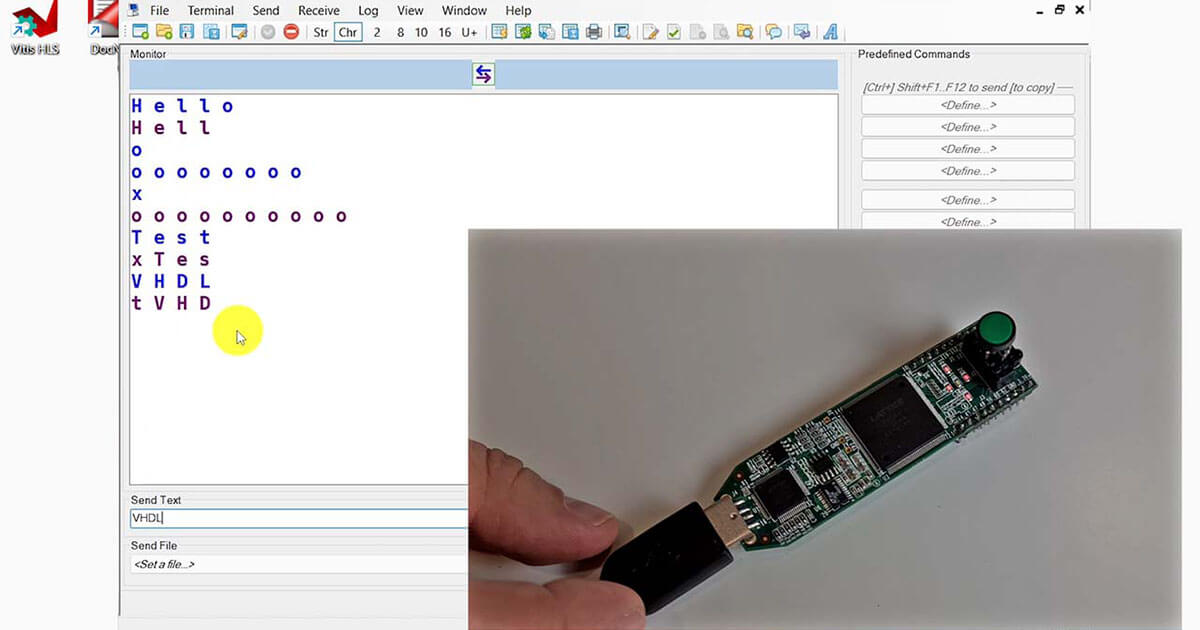LED lighting has revolutionized the way we illuminate our homes, offices, and public spaces. It is not only energy-efficient but also provides better quality and longer-lasting light than traditional incandescent bulbs. As more and more people switch to LED lighting, the demand for advanced LED controllers also increases. This is where VHDL comes in.

VHDL or VHSIC (Very High-Speed Integrated Circuit) Hardware Description Language is a programming language used to describe and simulate digital circuits, such as those used in FPGA (Field Programmable Gate Array) chips. It allows designers to create complex circuits and test them in simulation before implementing them in hardware. This has many benefits, including shorter development cycles, fewer errors, and greater flexibility.
One of the applications of VHDL is in creating dot matrix LED controllers, which are used to control individual LEDs to create patterns or characters on a display. This is commonly seen in advertising displays, scoreboards, and electronic signs. However, creating a dot matrix LED controller using VHDL is not an easy task. It requires knowledge of digital circuit design, VHDL coding, and simulation.
Fortunately, there are resources available to help anyone interested in learning VHDL and creating dot matrix LED controllers. One such resource is the VHDLwhiz Tutorial, which provides step-by-step guidance on how to create a dot matrix LED controller using FPGA and VHDL. The tutorial covers everything from the basics of VHDL to the simulation and implementation of the LED controller. This is a valuable resource for students, hobbyists, and professionals interested in learning VHDL and digital circuit design.
But why is LED lighting and advanced LED controllers so important? Firstly, LED lighting is energy-efficient, which means it saves money on electricity bills and reduces carbon emissions. LED lights can last up to 25,000 hours or more, which means they need to be replaced less often than traditional bulbs, reducing waste. LED lighting is also safer as it produces less heat and does not contain harmful chemicals such as mercury.
Secondly, advanced LED controllers can provide a lot of flexibility and creativity in lighting design. Dot matrix LED displays can be used to create dynamic patterns, animations, and text. They can be programmed to change colors, brightness, and intensity, depending on the time of day or the mood of the environment. They can also be integrated with sensors to create responsive lighting that changes based on occupancy or environmental conditions.
Finally, LED lighting and advanced LED controllers are becoming more affordable and accessible. This means that more people can enjoy the benefits of energy-efficient lighting and creative lighting design, regardless of their budget or technical expertise. Companies like FITMAN LED lighting Factory are leading the way in producing high-quality LED lights and controllers for various applications, including residential, commercial, and industrial.
In conclusion, LED lighting and advanced LED controllers are vital for creating energy-efficient, safe, and creative lighting solutions. VHDL is a powerful tool for digital circuit design and can be used to create efficient and advanced LED controllers, such as dot matrix controllers. Resources like the VHDLwhiz Tutorial can help anyone interested in learning VHDL and digital circuit design. As LED lighting becomes more affordable and accessible, we can expect to see more innovative and sustainable lighting solutions in the future.